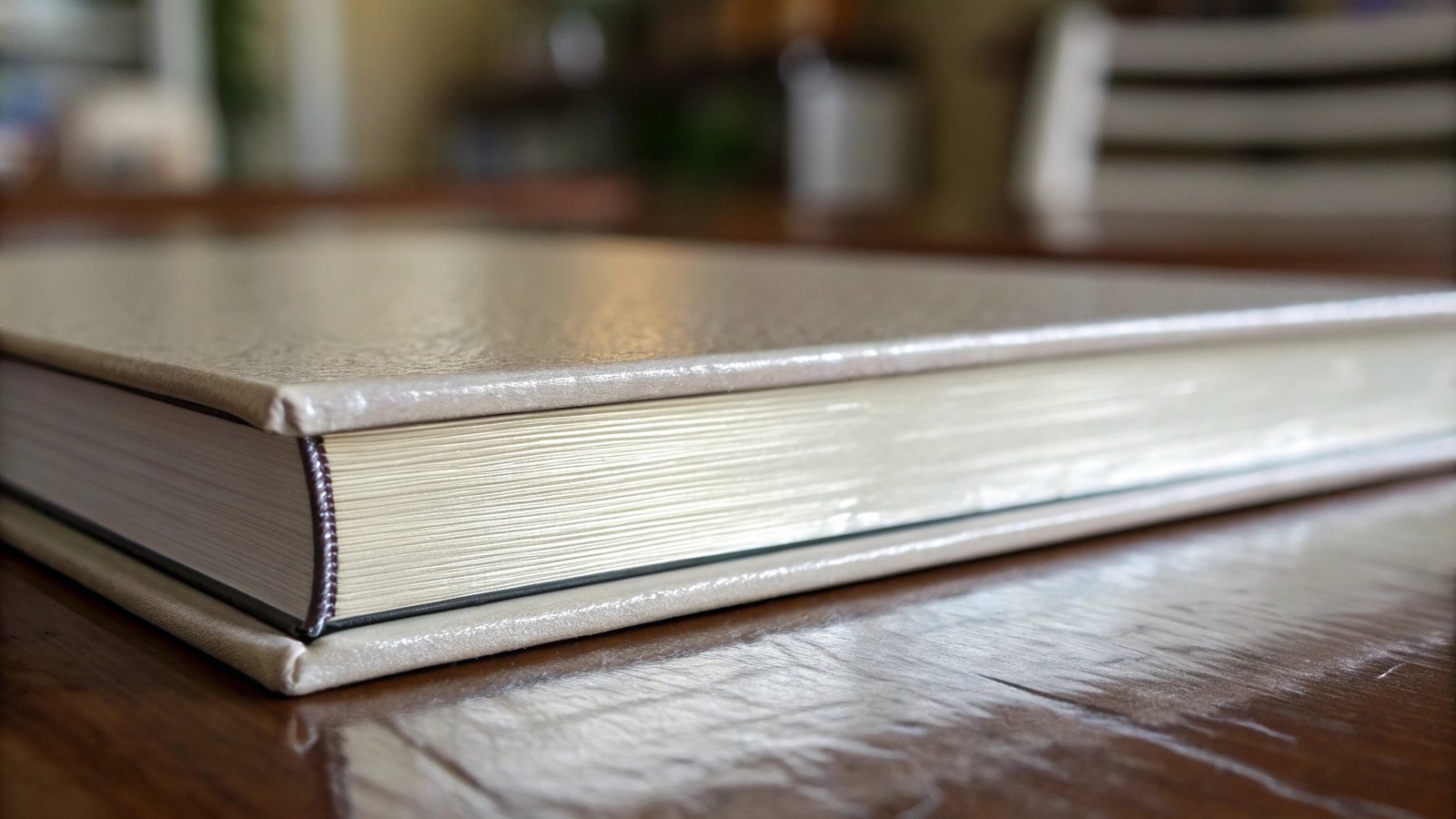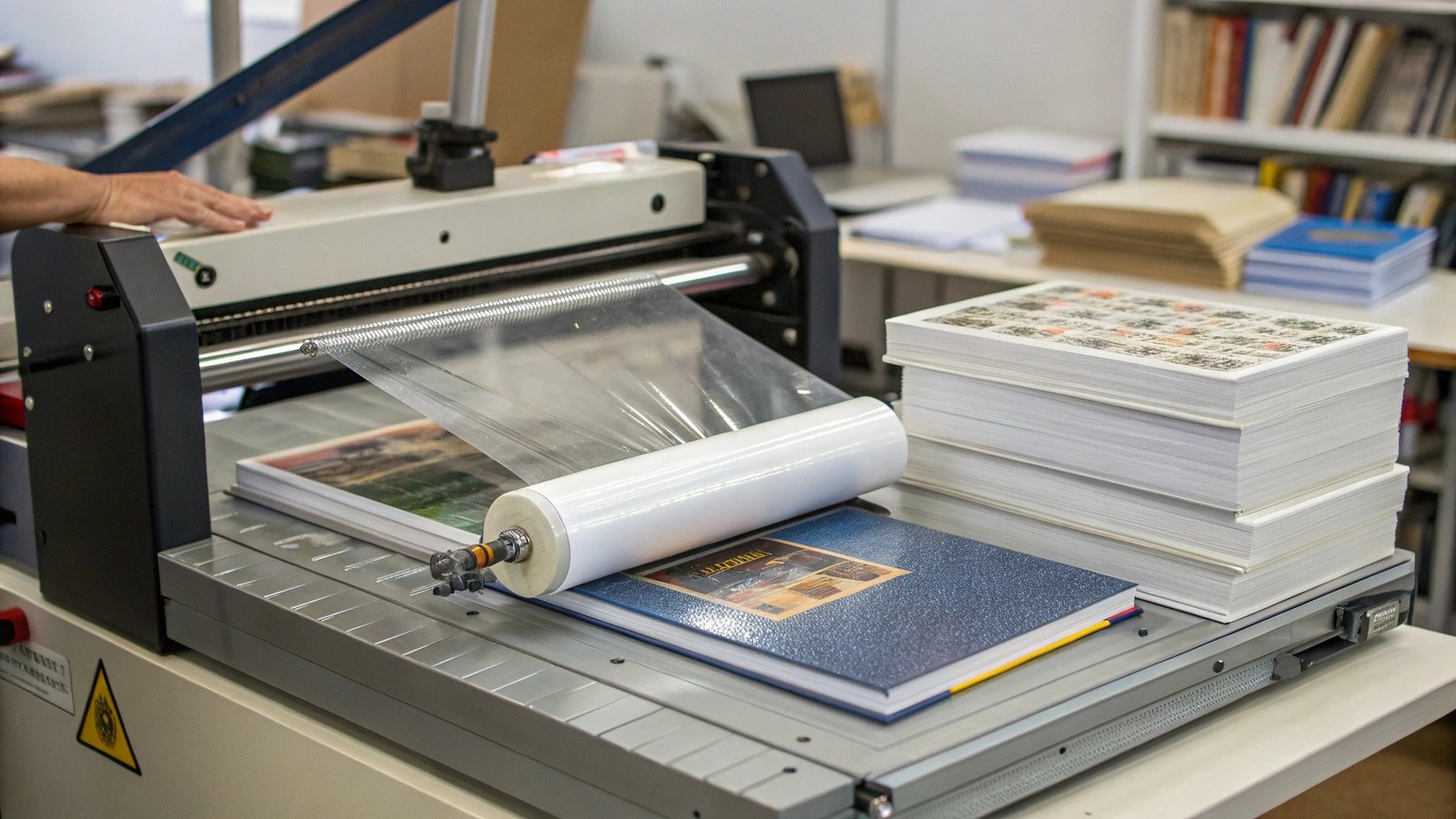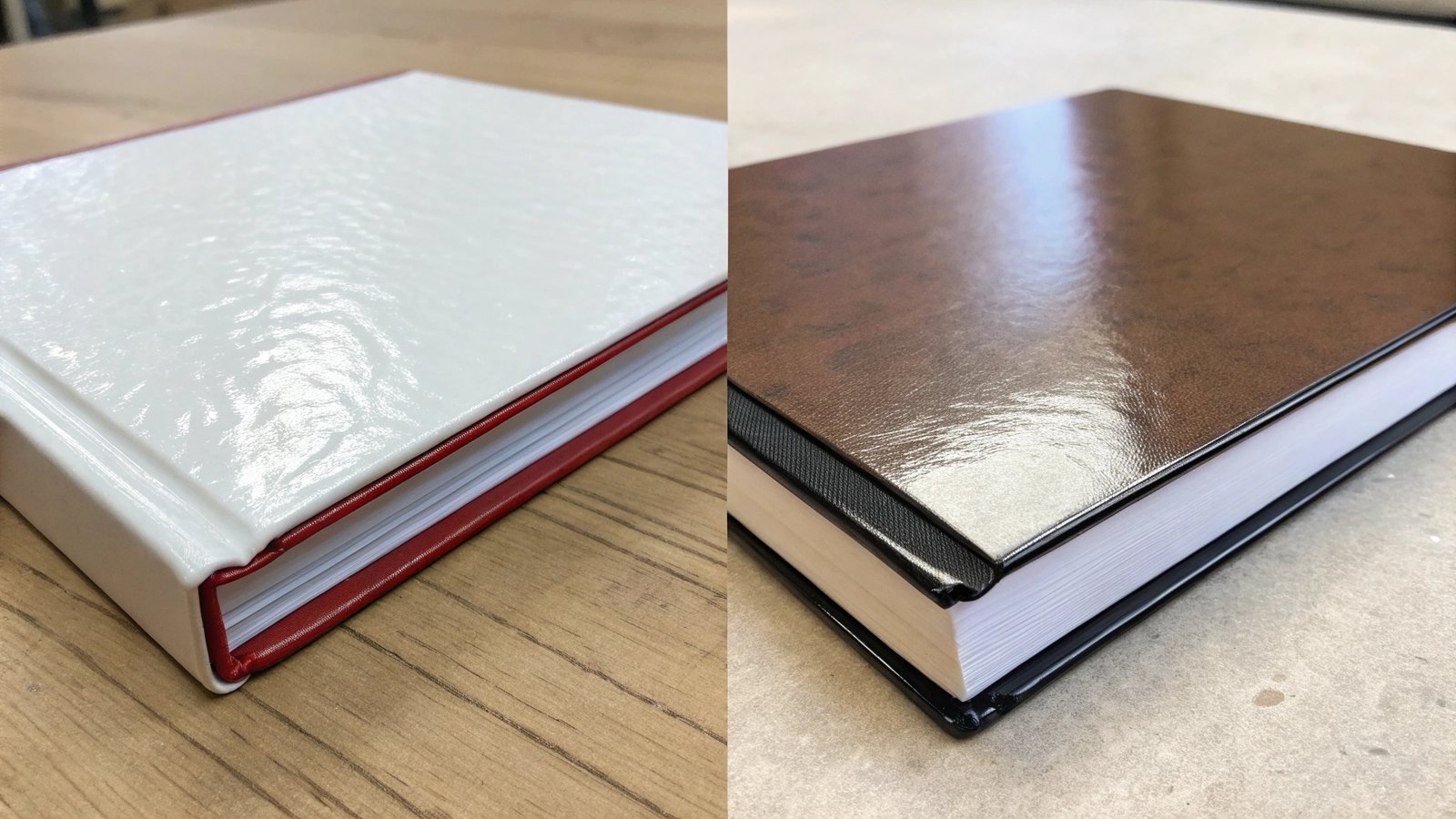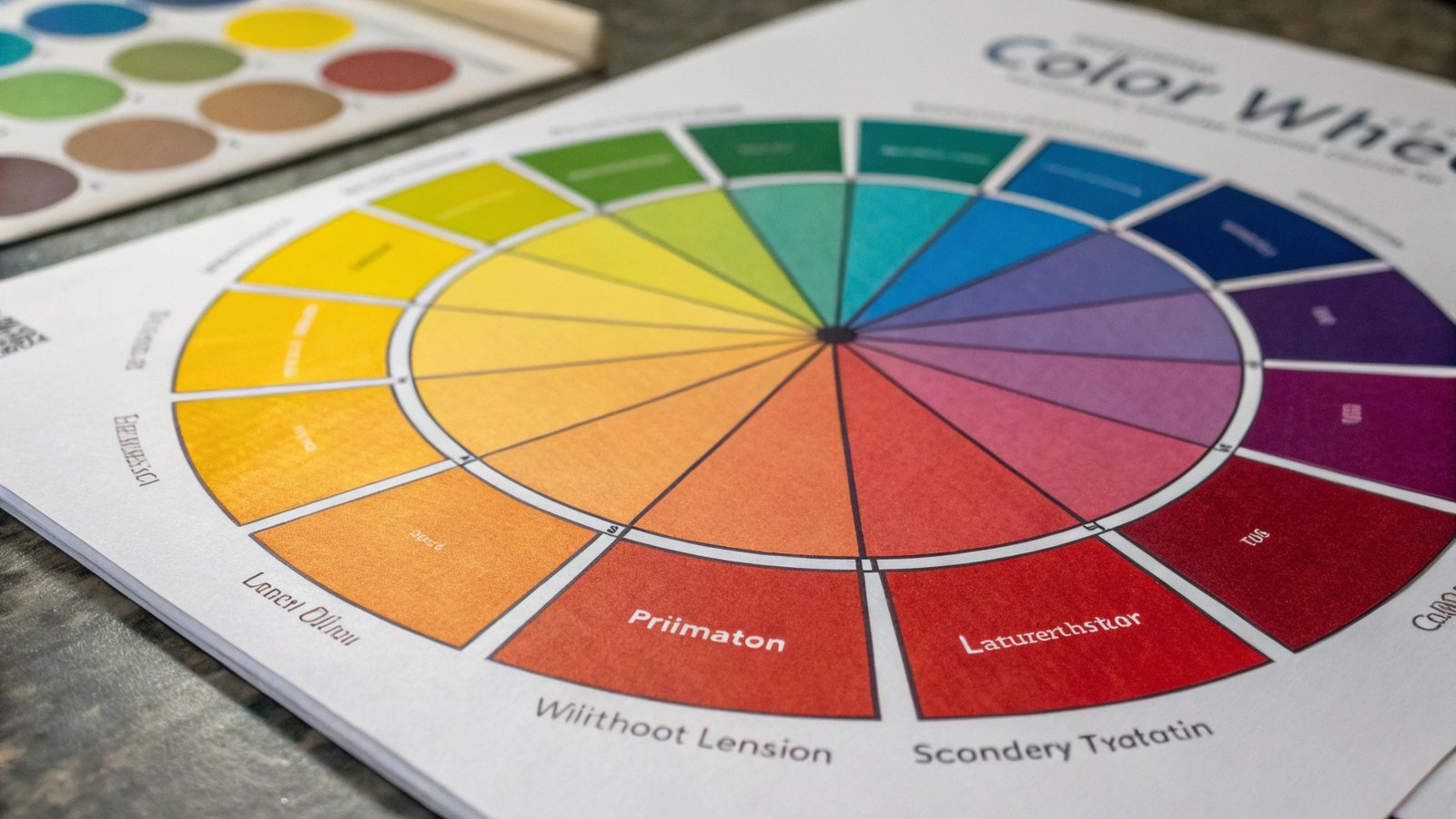Are you worried that lamination will change your carefully designed book cover? The final look can be different from your screen, but understanding your options ensures you get the perfect finish.
Lamination protects your book cover and fundamentally changes its appearance and feel. Gloss lamination creates a shiny, vibrant finish that makes colors pop. Matte lamination offers a non-reflective, sophisticated look that can slightly mute colors but adds a premium, tactile feel. The choice defines your book’s aesthetic.

The cover is the first thing a reader sees. It’s your book’s handshake, its first impression. You spend so much time getting the design just right, picking the perfect fonts and imagery. The final step, lamination, can either elevate that design or alter it in unexpected ways. But don’t worry. I’ve spent my life around paper and ink, and I’m here to walk you through everything you need to know to make the right choice. Let’s dive in and make sure your cover looks exactly how you envision it.
What is lamination?
You’ve probably heard the term lamination in every print conversation. But what does it actually mean for your book cover? Let’s clarify this simple but vital printing process.
Lamination is the process of applying a very thin plastic film to the surface of a paper cover after printing. This protective layer shields the ink from moisture, scratches, and wear, significantly increasing the book’s durability while also enhancing its visual appeal.

In my 37 years in this business, I’ve seen how a simple layer of film can make or break a book’s longevity. Lamination is more than just a cosmetic finish; it’s a functional necessity for most paperbacks and hardcover dust jackets. The process involves bonding a film, usually made of polypropylene, to the paper using either heat (thermal lamination) or pressure (cold lamination). This seals the printed surface, protecting it from the elements.
Why It’s So Important
| Feature | Benefit of Lamination |
|---|---|
| Protection | Guards against spills, fingerprints, and scuffs. |
| Durability | Prevents corners from curling and ink from rubbing off. |
| Appearance | Adds a professional finish, either glossy or matte. |
| Perceived Value | A laminated cover feels more substantial and high-quality. |
At my family’s company, Huaxin Printing, we consider lamination a standard step for quality. It ensures the book you worked so hard on arrives in your reader’s hands looking pristine and stays that way.
What is the difference between matte lamination and gloss lamination books?
You have to choose between matte and gloss lamination. This decision can feel small, but it dramatically impacts your book’s mood and can influence a buyer’s perception.
Gloss lamination gives a shiny, reflective finish that makes colors look bright and saturated. Matte lamination provides a soft, non-reflective, and elegant look. The difference is purely aesthetic and depends on the style you want your book to communicate.

Choosing between gloss and matte is a frequent conversation I have with publishers and authors. There’s no single "best" choice; it’s all about matching the finish to the book’s content and design. I remember working with a chef on a cookbook. He chose gloss lamination because it made the food photography look incredibly vibrant and delicious. The shiny surface was also easy to wipe clean, a practical bonus. In contrast, a poet I worked with chose matte lamination for her collection. The soft, velvety finish gave the cover a quiet, introspective feel that perfectly matched the tone of her work.
Matte vs. Gloss: A Head-to-Head Comparison
| Aspect | Gloss Lamination | Matte Lamination |
|---|---|---|
| Look | Shiny, high-reflection | Non-reflective, flat |
| Feel | Smooth and slick | Soft, sometimes velvety |
| Color Impact | Enhances vibrancy, deepens blacks | Softens colors, lower contrast |
| Durability | Hides scuffs well, but shows fingerprints | Hides fingerprints, can show scratches |
| Best For | Cookbooks, children’s books, comics | Literary fiction, business books, art books |
How lamination would affect the colors?
You’ve spent hours perfecting your cover’s color palette. Now you’re worried that the final laminated cover won’t match your vision. It’s a valid concern, so let’s clarify this.
Lamination directly impacts how colors are perceived. Gloss lamination makes colors, especially darks, appear deeper and more saturated. Matte lamination scatters light, which can soften the overall color palette and slightly lower the contrast, creating a more subdued, artistic effect.

This is one of the most critical points of discussion in print production. The change in color happens because of how light interacts with the surface. A glossy surface reflects light directly, making the colors appear richer. A matte surface diffuses the light, softening the look. The most important takeaway here is to communicate with your printer. You must tell them whether you want to match the colors on a press proof before or after lamination.
The Color Matching Conversation
At Huaxin Printing, this is a standard part of our process. We ask the client, "Should the final, laminated cover match the proof, or should the unlaminated print match the proof?" If we don’t have this conversation, you might approve a vibrant, unlaminated sheet, only to be surprised when the final book with matte lamination looks a bit duller than you expected.
Here’s a simple breakdown of the effect:
| Original Color | After Gloss Lamination | After Matte Lamination |
|---|---|---|
| Deep Black | Becomes a richer, deeper black | Softens to a dark charcoal |
| Bright Red | Pops with more energy and vibrancy | Becomes more subdued and refined |
| Photography | Details appear sharper and vivid | Gains a soft, artistic quality |
Should I choose matte or glossy?
You understand the key differences between matte and gloss. But when it comes time to decide, you might still feel stuck. Let’s break down the decision into simple factors.
There is no right or wrong answer. Choose based on your book’s genre, target audience, and cover design. Glossy works for high-energy designs, while matte offers a more premium, subtle feel. The goal is to align the finish with your book’s overall message.

The choice comes down to the personality of your book. Think of it like dressing a person. A flashy, sequined jacket (gloss) creates a different impression than a tailored, cashmere coat (matte). Both are great, but for different occasions. To make your decision easier, I always suggest clients think through a few key areas. Over the years, this has helped countless people feel confident in their final choice.
How to Make Your Decision
-
Consider Your Genre and Audience
For children’s books, cookbooks, or magazines, gloss is often the standard. It’s eye-catching and durable. For literary fiction, poetry, business books, or memoirs, matte lamination often lends a more serious, sophisticated, and "premium" feel. -
Look at Your Cover Design
Does your cover feature bright, bold colors and high-impact photography? Gloss will make it jump off the shelf. Is your design more minimalist, text-based, or artistic? Matte will complement it beautifully, giving it an understated elegance. -
Think About the "Vibe"
What feeling do you want to evoke? Energetic, exciting, and loud? Go with gloss. Calm, luxurious, and thoughtful? Matte is your friend. We also offer specialty finishes like soft-touch matte lamination at Huaxin Printing, which has a unique velvety texture that invites people to touch it.
Conclusion
Lamination is essential for protecting your cover and defining its final look. Whether you choose the vibrant pop of gloss or the elegant touch of matte, clear communication is key.





